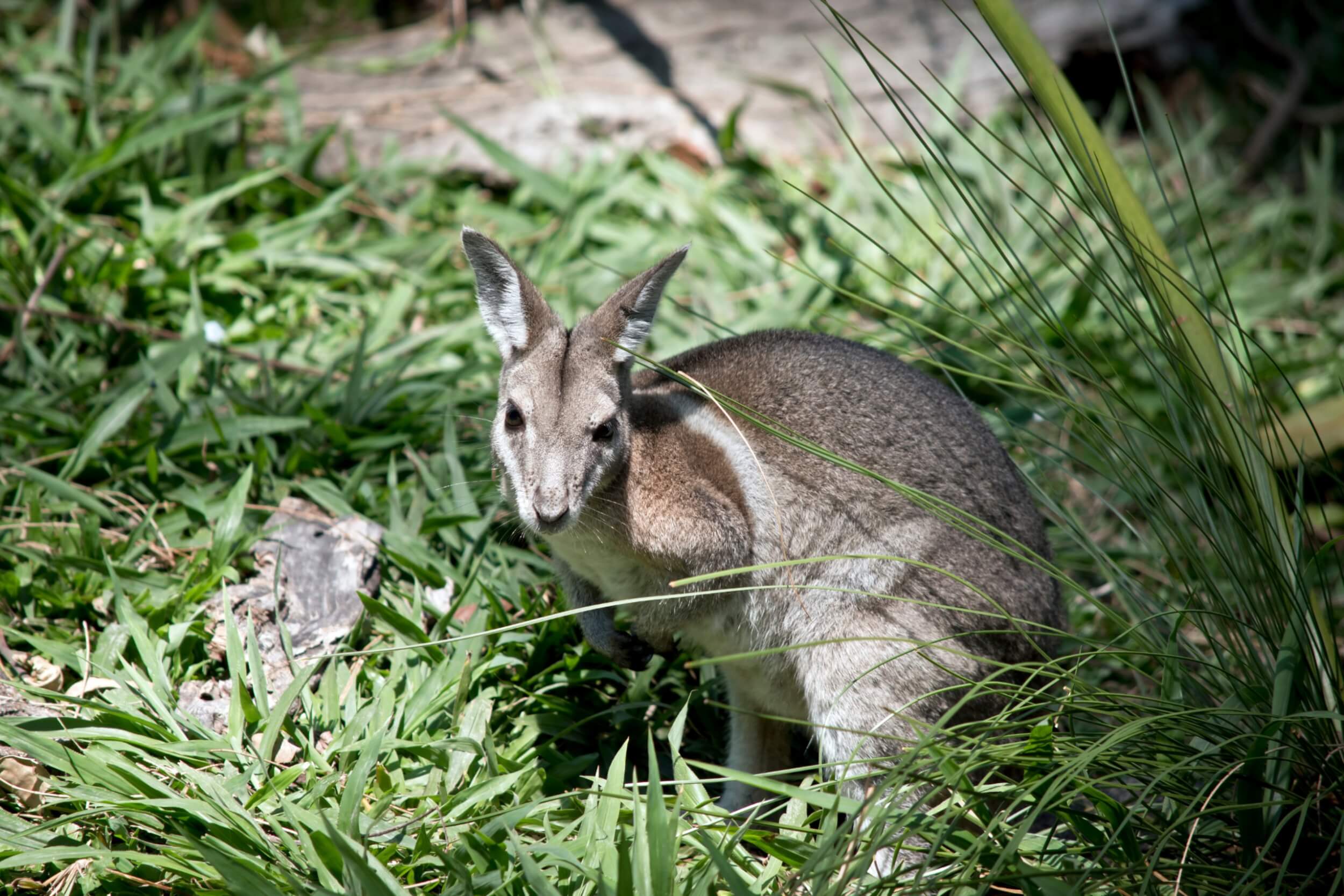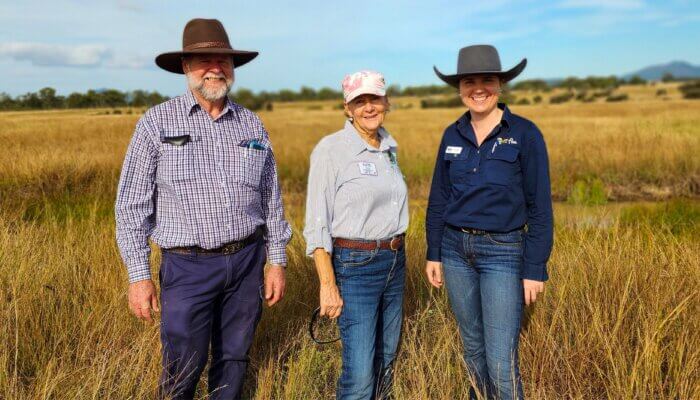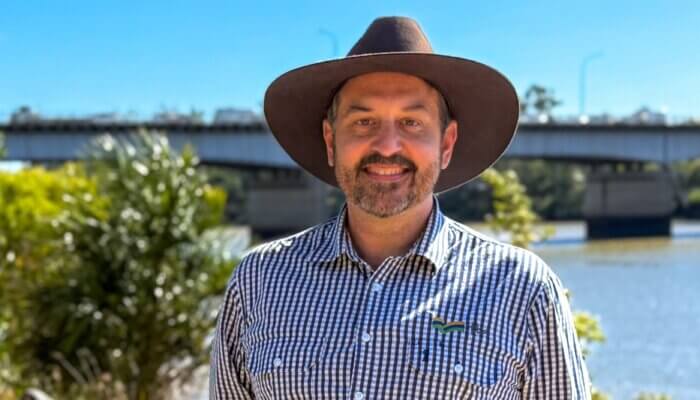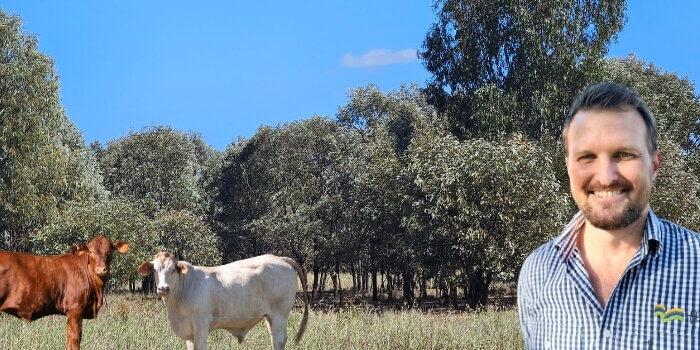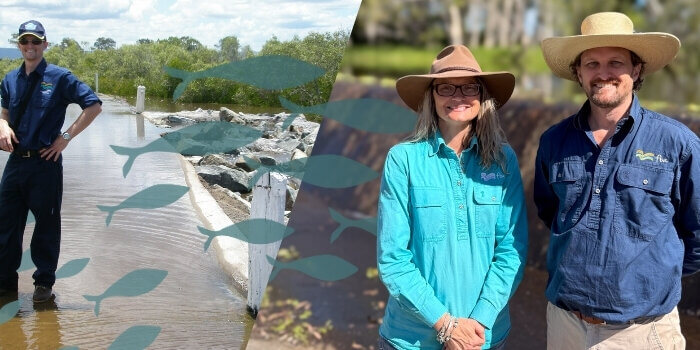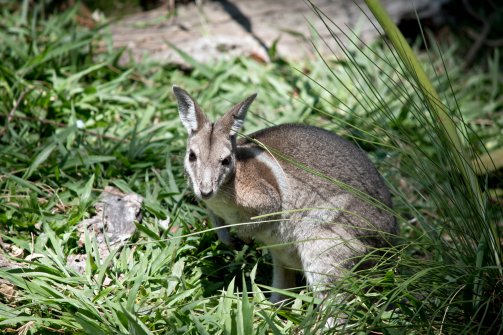
Collaboration Brings Back Endangered Bridled Nail-tailed Wallaby
Posted on February 16th, 2022
The stunning bridled nail-tailed wallaby (BNTW) was believed to be extinct for most of the 20th century. Then by chance, a sole surviving population was found in 1973 on Taunton Station (now Taunton National Park, the Park) near Dingo in central Queensland.
By 1993, the population had grown to about 2267 BNTW however, the following five years saw numbers dwindle drastically to less than 100 by 1998 (Lundie-Jenkins et al. 1998). Caused by feral cat and wild dog predation of the marsupial and lack of wallaby feed during drought, actions to remove predators and provide extra food supplies were undertaken.
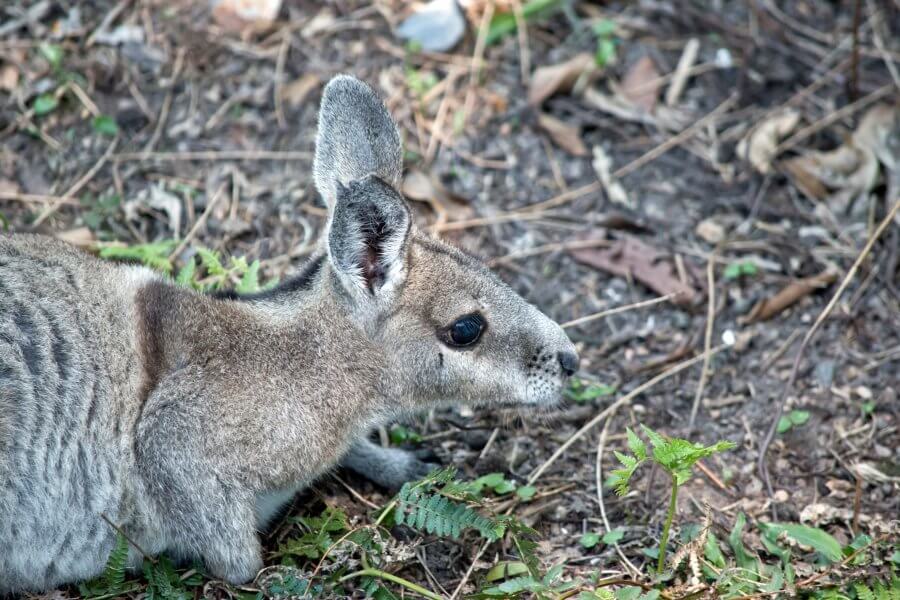
The 11,676ha park is home to Australia’s largest population of BNTW’s. Its boundaries back onto many neighbouring private farming properties. Fitzroy Basin Association (FBA) has a reputation for coordinating projects involving government and research bodies working with private property owners and was asked to administer the conservation project and provide off-park management to help the BNTW population.
By coordinating land managers and Queensland Parks and Wildlife Service (QPWS) to implement individual predator control actions like baiting, trapping, and shooting at the same time, FBA improved the effectiveness of feral predator control by combining on-park and off-park efforts simultaneously.
When QPWS planned to conduct on-park feral predator control, FBA coordinated up to ten land managers to run control efforts at the same time. By doing so, a donut shape of control activity around the Park, maximised the number of predators removed and minimised the number that could migrate elsewhere when control efforts were active.
A January 2022 CSIRO Wildlife Research journal article by QPWS happily declared BNTW numbers increased by 214% in the four years from 2013 to 2017 because of the extensive efforts taken by the invested stakeholders.
FBA Senior Environment Project Officer Cassandra Tracey said collaboration between QPWS, FBA and the land managers of the region was critical to bringing back the BNTW.
“FBA worked as a coordination hub, gathering information and schedules, then getting all parties in and around the Park to work together over five years to give BNTW the best chance of survival.”
Over 20km of cattle exclusion fencing was installed by FBA to help develop vegetation corridors to provide shelter and food for BNTWs on private properties neighbouring the Park.
“As well as coordinating removal of predators, FBA installed fences to provide more ways for BNTWs to move around safely in vegetation corridors. By keeping cattle out, BNTW’s preferred diet of forbs and herbs was more readily available. FBA used motion sensor cameras in these corridors to record evidence they were indeed expanding their territory,” said Ms Tracey.
Maintaining communications with land managers and organising them to work alongside QPWS has helped bring the BNTW back.
“Partnering and communicating throughout this project has been integral in securing the population at the Park and it’s been immensely satisfying being part of the collective effort to bring this marsupial back from the brink of extinction,” concluded Ms Tracey.
Such is the success of this project that other projects to re-establish BNTW populations in Australia have been sourcing juveniles from Taunton National Park to re-populate previously extinct regions.
The landmark CSIRO Wildlife Research paper details the success of five years of combined effort by many contributing parties to bring the endangered BNTW back against the odds. The paper illustrates that through collaboration, coordination, and communication of predator control, supplementary feeding, and habitat improvement, it is not only possible, but an important investment in preserving native species.





